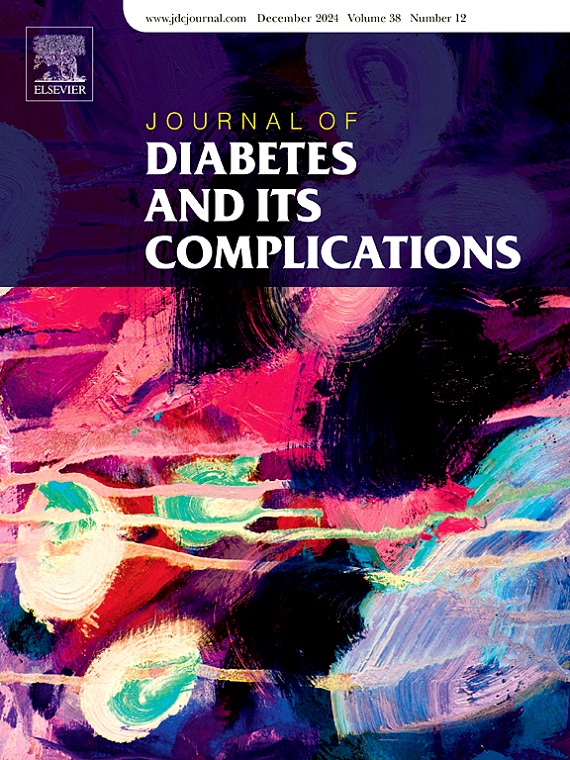贝特治疗能否重新定义糖尿病视网膜病变的治疗?疗效和安全性的综合系统评价和荟萃分析。
IF 3.1
3区 医学
Q3 ENDOCRINOLOGY & METABOLISM
引用次数: 0
摘要
背景:糖尿病视网膜病变(DR)是一种严重的微血管糖尿病并发症,也是可预防失明的主要原因。贝特类,作为降脂剂,已被发现在改变DR进展方面有希望。目的:确定贝特类药物在降低糖尿病视网膜病变的发生率、进展和严重程度方面的有效性和安全性。方法:比较糖尿病患者贝特治疗与非贝特治疗的随机对照试验和观察性队列研究符合本系统评价和荟萃分析的要求。研究结果包括DR的发生率、长期进展、进展为增殖性糖尿病视网膜病变(PDR)和不良反应。使用rob2和ROBINS-I工具评估偏倚风险,由于研究人群、随访时间和诊断方法的异质性,对结果进行叙述性综合。结果:只有17篇文章符合纳入本研究的条件。与安慰剂相比,贝特酯显著降低了糖尿病视网膜病变的发生率(OR 0.72 (95% CI: 0.66-0.77), p 2 = 26.53%),并减缓了长期进展(OR 0.67 (95% CI: 0.57-0.79), p 2 = 26.39%)。贝特类药物联合他汀类药物与单独贝特类药物相比,DR进展减少17% (HR 0.84) (95% CI: 0.80-0.89), p 2 = 31.7%。进展为增生性糖尿病视网膜病变有良好趋势(RR 0.71 (95% CI: 0.15 ~ 3.32), p = 0.67,但结果无统计学意义。不良事件分析,包括全因死亡率(OR 0.86 (95% CI: 0.62-1.19), p = 0.36;I2 = 0%),显示贝特类药物与安慰剂相比没有显著的安全性益处。结论:贝特类药物可显著降低糖尿病视网膜病变的发病率和长期进展。安全性分析显示,安慰剂和贝特类药物在减少严重不良事件或全因死亡率方面无显著差异。关于这个研究课题我们知道些什么?这项研究补充了什么及其未来的意义。本文章由计算机程序翻译,如有差异,请以英文原文为准。
Can fibrate therapy redefine the management of diabetic retinopathy? A comprehensive systematic review and meta-analysis of efficacy and safety
Background
Diabetic retinopathy (DR) is a severe microvascular diabetes complication and a leading cause of preventable blindness. Fibrates, being lipid-lowering agents, have been found to have promise in modifying DR progression.
Objective
To determine fibrates' effectiveness and safety profile in reducing the incidence, progression, and severity of diabetic retinopathy.
Methods
Randomized controlled trials and observational cohort studies that compared fibrate therapy with no fibrate therapy in patients with diabetes were eligible for this systematic review and meta-analysis. The outcomes of interest included the incidence of DR, long-term progression, progression to Proliferative Diabetic Retinopathy (PDR), and adverse effects. Risk of bias was assessed using the RoB 2 and ROBINS-I tools, and results were synthesized narratively due to heterogeneity in the study populations, follow-up durations, and diagnostic methods.
Results
Only 17 articles were eligible for inclusion in this study. Fibrates significantly reduced the incidence of diabetic retinopathy (OR 0.72 (95 % CI: 0.66–0.77), p < 0.001; I2 = 26.53 %) and slowed long-term progression (OR 0.67 (95 % CI: 0.57–0.79), p < 0.001).; I2 = 26.39 %) compared to placebo. Combining fibrates with statin reduces DR progression by 17 % compared to fibrate alone HR 0.84 (95 % CI: 0.80–0.89), p < 0.001; I2 = 31.7 %. While progression to proliferative diabetic retinopathy showed a favorable trend (RR 0.71 (95 % CI: 0.15–3.32), p = 0.67, the result was not statistically significant. Analysis of adverse events, including all-cause mortality (OR 0.86 (95 % CI: 0.62–1.19), p = 0.36; I2 = 0 %), revealed no significant safety benefits in comparison between fibrates and placebo.
Conclusion
Fibrates significantly reduce both the incidence and long-term progression of diabetic retinopathy. Safety analyses revealed no significant difference between placebo and fibrates in reducing serious adverse events or all-cause mortality.
What is known about this research topic?
- •Diabetic retinopathy (DR) is a leading cause of preventable blindness, with limited systemic therapies beyond glycemic and blood pressure control.
- •Fibrates, primarily lipid-lowering agents, have shown potential benefits for microvascular complications, including DR, in trials like FIELD and ACCORD Eye.
What this study adds and its future implications
- •This meta-analysis confirms fibrates significantly reduce the incidence and long-term progression of DR, with fenofibrate showing the greatest benefit.
- •Although progression to proliferative DR showed only a favorable trend, no major safety concerns were identified.
- •These findings support fibrates as an affordable adjunctive therapy in DR management, particularly valuable for early disease stages and resource-limited settings.
求助全文
通过发布文献求助,成功后即可免费获取论文全文。
去求助
来源期刊

Journal of diabetes and its complications
医学-内分泌学与代谢
CiteScore
5.90
自引率
3.30%
发文量
153
审稿时长
16 days
期刊介绍:
Journal of Diabetes and Its Complications (JDC) is a journal for health care practitioners and researchers, that publishes original research about the pathogenesis, diagnosis and management of diabetes mellitus and its complications. JDC also publishes articles on physiological and molecular aspects of glucose homeostasis.
The primary purpose of JDC is to act as a source of information usable by diabetes practitioners and researchers to increase their knowledge about mechanisms of diabetes and complications development, and promote better management of people with diabetes who are at risk for those complications.
Manuscripts submitted to JDC can report any aspect of basic, translational or clinical research as well as epidemiology. Topics can range broadly from early prediabetes to late-stage complicated diabetes. Topics relevant to basic/translational reports include pancreatic islet dysfunction and insulin resistance, altered adipose tissue function in diabetes, altered neuronal control of glucose homeostasis and mechanisms of drug action. Topics relevant to diabetic complications include diabetic retinopathy, neuropathy and nephropathy; peripheral vascular disease and coronary heart disease; gastrointestinal disorders, renal failure and impotence; and hypertension and hyperlipidemia.
 求助内容:
求助内容: 应助结果提醒方式:
应助结果提醒方式:


